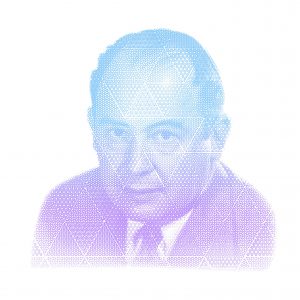Attention, expertise
and security
Attention, expertise
and security

János Neumann (December 28, 1903 – February 8, 1957) was a Hungarian-American
mathematician, physicist, computer scientist, engineer and polymath. Von Neumann was
generally regarded as the foremost mathematician of his time and said to be the last
representative of the great mathematicians.
He integrated pure and applied sciences. Von Neumann made major contributions to many fields,
including mathematics (foundations of mathematics, functional analysis, ergodic theory, group theory,
representation theory, operator algebras, geometry, topology, and numerical analysis), physics
(quantum mechanics, hydrodynamics, and quantum statistical mechanics), economics (game theory),
computing (Von Neumann architecture, linear programming, self-replicating machines, stochastic
computing), and statistics.
He was a pioneer of the application of operator theory to quantum mechanics in
the development of functional analysis, and a key figure in the development of game
theory and the concepts of cellular automata, the universal constructor and the digital
computer.
Von Neumann published over 150 papers in his life: about 60 in pure mathematics, 60 in applied
mathematics, 20 in physics, and the remainder on special mathematical subjects or non-
mathematical ones. His last work, an unfinished manuscript written while he was in the hospital,
was later published in book form as The Computer and the Brain.
His analysis of the structure of self-replication preceded the discovery of the structure of
DNA. In a shortlist of facts about his life he submitted to the National Academy of Sciences, he
wrote, The part of my work I consider most essential is that on quantum mechanics, which
developed in Göttingen in 1926, and subsequently in Berlin in 1927–1929. Also, my work on
various forms of operator theory, Berlin 1930 and Princeton 1935–1939; on the ergodic theorem,
Princeton, 1931–1932.
During World War II, von Neumann worked on the Manhattan Project with theoretical
physicist Edward Teller, mathematician Stanislaw Ulam and others, problem-solving key
steps in the nuclear physics involved in thermonuclear reactions and the hydrogen bomb.
He developed the mathematical models behind the explosive lenses used in the implosion-type
nuclear weapon and coined the term (of TNT) as a measure of the explosive force
generated. After the war, he served on the General Advisory Committee of the United States
Atomic Energy Commission, and consulted for organizations including the United States Air
Force, the Army Ballistic Research Laboratory, the Armed Forces Special Weapons Project,
and the Lawrence Livermore National Laboratory. As a Hungarian émigré, concerned that the
Soviets would achieve nuclear superiority, he designed and promoted the policy of mutually
assured destruction to limit the arms race.